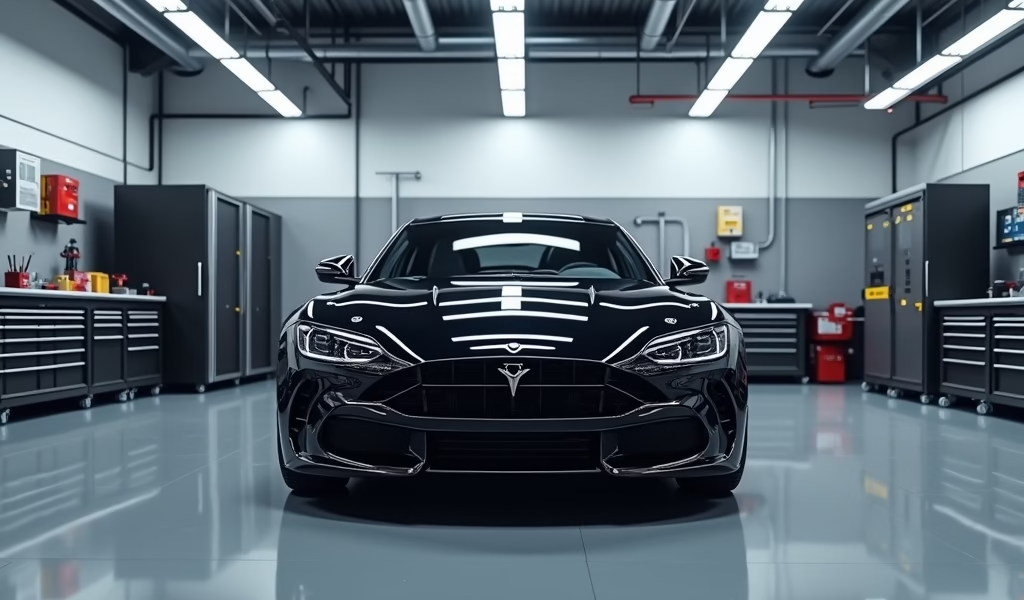Overview
This article presents five essential car maintenance practices for extending vehicle lifespan: regular oil changes every 5,000-7,500 miles, proper tire maintenance including pressure checks and rotations, monitoring vital fluids (coolant, transmission, brake, power steering), battery care with terminal cleaning and timely replacements, and consistent cleaning to protect both exterior and interior surfaces. Following these maintenance pillars can potentially double a vehicle’s service life, saving thousands in major repairs while transforming a car’s potential from struggling at 150,000 miles to easily surpassing 300,000 miles.
Table of Contents
- Introduction: Why Car Maintenance Matters
- Regular Oil Changes: Your Engine’s Lifeblood
- Tire Maintenance: Where Safety Meets Efficiency
- Essential Fluid Checks: The Hidden Heroes
- Battery Care: Keeping Your Power Center Healthy
- Consistent Cleaning: Protection Beyond Appearance
- Conclusion: Your Road to Vehicle Longevity
- Frequently Asked Questions
Introduction: Why Car Maintenance Matters
As a mechanic with over 20 years under my belt, I’ve seen firsthand how proper maintenance transforms a vehicle’s lifespan. Your car isn’t just transportation—it’s an investment that deserves protection. The difference between a neglected vehicle struggling to reach 150,000 miles and a well-maintained one sailing past 300,000 miles often comes down to simple, consistent care.
The math is compelling: spending a few hundred dollars on preventative maintenance annually saves thousands in major repairs or premature replacement. Think of it as healthcare for your car—regular checkups prevent serious illness. Today, I’ll share the five most crucial maintenance practices that keep vehicles running smoothly for years, even decades.
These tips apply whether you drive a practical sedan or a flashy yellow car from Cars that turns heads. The principles of good automotive care remain universal across makes and models.
Regular Oil Changes: Your Engine’s Lifeblood
If your car had a heart, oil would be its blood. Clean oil lubricates hundreds of moving parts, reduces friction, helps dissipate heat, and carries away harmful particles that would otherwise shorten your engine’s life.
For most modern vehicles, changing oil every 5,000-7,500 miles strikes the right balance. Some newer models with synthetic oil can stretch to 10,000 miles between changes. Even if you drive infrequently, change your oil twice yearly—oil breaks down over time even when not in use.
Synthetic oil costs more upfront but offers superior protection, especially in extreme temperatures. For higher-mileage vehicles (75,000+ miles), specialized high-mileage formulations help reduce oil consumption and condition aging seals, addressing the common issues that develop in well-loved engines.
Watch for these warning signs that your car needs fresh oil:
- Dashboard oil warning light illumination
- Dark, dirty oil on the dipstick
- Unusual engine noises, particularly ticking or knocking
- Decreased performance or fuel efficiency
According to a study by Edmunds, regular oil changes remain the single most important maintenance item for extending engine life, potentially doubling your engine’s serviceable years.

Tire Maintenance: Where Safety Meets Efficiency
Your tires are the only parts of your vehicle that actually touch the road. This critical contact patch—often no larger than your hand—is responsible for grip, handling, braking distance, and even fuel economy.
Check tire pressure monthly, as ambient temperature changes can significantly affect pressure. Underinflated tires flex more, generating excess heat and increasing blowout risk. Overinflated tires provide a harsh ride and wear unevenly. Find the recommended pressure on the driver’s door jamb sticker or in your owner’s manual—not on the tire itself, which shows maximum pressure.
Rotation is essential for tire longevity. Have tires rotated every 5,000-7,500 miles to ensure even wear. While you’re at it, check alignment—hitting potholes or curbs can throw wheels out of alignment, causing premature tire wear and handling issues.
The penny test remains a reliable tread depth check: insert a penny with Lincoln’s head upside down into your tire tread. If you can see the top of Lincoln’s head, your treads are worn below the safe minimum of 2/32″.
If you live where winter brings snow and ice, consider dedicated winter tires. Research from Consumer Reports shows that winter tires provide up to 50% more traction than all-seasons when temperatures drop below 45°F, dramatically improving stopping distances on slippery surfaces.
Essential Fluid Checks: The Hidden Heroes
Beyond oil, your car relies on several vital fluids, each with its own crucial role. Regular checks of these fluids can prevent catastrophic failures.
Coolant/antifreeze prevents your engine from freezing in winter and overheating in summer. Most modern vehicles use extended-life coolant needing replacement every 5 years or 100,000 miles, but check levels twice yearly and look for discoloration or debris. A cooling system failure can destroy an engine in minutes.
Transmission fluid keeps your gears shifting smoothly. For automatics, check with the engine running and warm. Healthy fluid is bright red with a sweet smell—dark or burnt-smelling fluid signals trouble. Many newer vehicles have sealed transmissions with “lifetime” fluid, but don’t be fooled—”lifetime” often means 100,000 miles. Older cars typically need service every 30,000-60,000 miles.
Brake fluid is arguably your vehicle’s most critical fluid. It absorbs moisture over time, which can lead to brake system corrosion and failure. Have it inspected annually and replaced every 2-3 years regardless of mileage—this isn’t an area to economize.
Power steering fluid enables those easy turns. Check monthly for proper level and clarity. Whining when turning often indicates low or contaminated fluid.
Don’t overlook windshield washer fluid. This humble liquid is essential for visibility during bad weather. Keep it topped off year-round, using winter-grade fluid in cold climates.
Creating a fluid maintenance schedule similar to what you might see for iconic movie cars can help you keep track of these crucial services.
Battery Care: Keeping Your Power Center Healthy
Modern vehicles rely heavily on electronics, making your battery and electrical system more critical than ever. The average car battery lasts 3-5 years, but extreme temperatures significantly shorten battery life.
Warning signs of battery issues include slow engine cranking, dimming headlights, electrical gremlins, or that dreaded clicking sound when turning the key. Don’t ignore a dashboard battery warning light.
Twice yearly, inspect battery terminals for corrosion—that white, powdery substance that accumulates. Clean with a wire brush and a solution of baking soda and water. Ensure connections are tight but not overtightened, as excess pressure can damage battery posts.
While alternators and starters don’t require regular maintenance, listen for unusual noises during startup. A high-pitched squeal might indicate a loose alternator belt, while grinding during startup could signal starter problems.
For vehicles that sit for extended periods, a battery maintainer prevents drainage and extends battery life. These affordable devices pay for themselves by preventing that frustrating “dead battery” moment.

Consistent Cleaning: Protection Beyond Appearance
Regular washing isn’t vanity—it’s preservation. Road salt, bird droppings, tree sap, and industrial fallout actively attack your car’s finish. Washing every two weeks prevents these contaminants from bonding to and eventually eating through your paint.
Apply quality wax or sealant 3-4 times yearly to provide a protective barrier against the elements. Modern ceramic coatings offer longer-lasting protection, though at a higher initial cost. These products create a sacrificial layer that takes the abuse instead of your paint.
Your car’s interior deserves equal attention. Vacuum regularly to prevent dirt particles from grinding into and abrading upholstery. Clean spills promptly to prevent staining and apply UV protectant to dash and door panels to prevent cracking and fading. Leather surfaces benefit from conditioning every few months.
The undercarriage is often forgotten but critically important. Periodically spray the underside with a garden hose—especially after driving on salted winter roads—to prevent rust from taking hold on your frame and suspension components.
Whenever possible, park in a garage or carport. This simple step shields your vehicle from UV damage, environmental contaminants, and temperature extremes that age vehicles prematurely. If you’re fascinated by automotive personalities, you might enjoy reading about beloved car characters while waiting for your car to dry after a good wash.
Conclusion: Your Road to Vehicle Longevity
Your vehicle represents one of your largest investments. These five maintenance pillars—oil changes, tire care, fluid maintenance, battery attention, and consistent cleaning—form the foundation of vehicle longevity. None are particularly time-consuming or expensive, but together they dramatically extend your car’s usable life.
Building a relationship with a trusted mechanic proves invaluable over time. A good technician becomes familiar with your vehicle’s quirks and can spot potential issues before they become expensive problems.
Create a maintenance schedule based on your vehicle’s owner’s manual and driving habits. Digital reminders or simple calendar entries prevent forgotten service items. The small costs of routine maintenance pale compared to major repairs or premature replacement.
Remember, your car faithfully takes you where you need to go every day. Return the favor with consistent care, and it will reward you with years—even decades—of reliable service. That’s not just good for your wallet; it’s better for our environment too.
Frequently Asked Questions
How often should I really change my oil?
For most modern vehicles, every 5,000-7,500 miles is ideal. Even with minimal driving, change it twice yearly as oil degrades over time.
Can I skip tire rotations if my tread looks even?
No, even visually even tread can hide uneven wear patterns. Regular rotations every 5,000-7,500 miles maximize tire life and performance.
What’s the minimum maintenance for a car I rarely drive?
Even rarely-driven vehicles need oil changes twice yearly, monthly battery checks, and occasional driving to prevent system deterioration. Fluids still degrade with time, not just mileage.
How do I know if my battery is failing?
Watch for slow engine cranking, dimming lights, electrical issues, or dashboard warning lights. Most batteries last 3-5 years, so proactive replacement near the end of this window prevents inconvenient failures.
Is synthetic oil worth the extra cost?
Yes, synthetic oil provides superior protection, especially in extreme temperatures and high-performance engines. The extended change intervals often offset the higher per-change cost.


Pingback: Kids Car Movies: 7 Proven Car Care Hacks - knowsyourcar.com